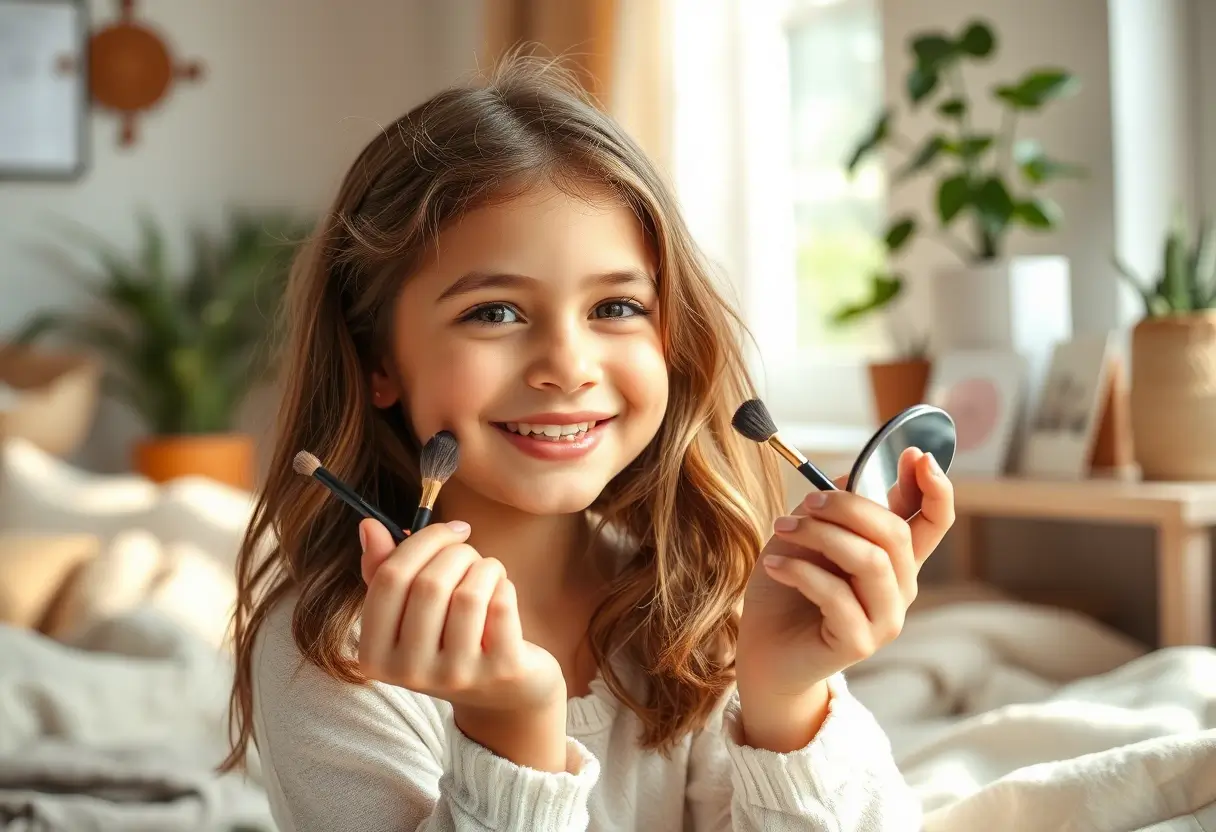“Mumma, what makes my lip tint different from yours?”
When my 8-year-old Riya asked this question during our morning routine, I realized it was time to dive deeper into the science behind her favorite natural tints. As a biochemist and mother, I’m thrilled to share what makes these products truly revolutionary.
Beyond the Beauty: Understanding Natural Tints
Let’s start with a truth bomb: not all “natural” products are created equal. After analyzing countless formulations in my lab, I’ve discovered why some stand out from the crowd.
The Microscopic Marvel
Picture this: Under my laboratory microscope, I compared traditional lipstick particles with natural tint molecules. The difference? Like comparing a heavy wool blanket to a silk dupatta!
Breaking Down the Science
Traditional Cosmetics vs. Natural Tints
Traditional makeup often contains:
- Synthetic dyes
- Heavy metals
- Petroleum-based waxes
- Artificial preservatives
Natural tints feature:
- Plant-based pigments
- Mineral colorants
- Botanical extracts
- Natural preservative systems
The Power of Nature: Understanding Key Ingredients
What Makes Natural Tints Safe?
Dr. Mehra, leading pediatric dermatologist, explains: “Children’s skin absorbs products up to 10 times more efficiently than adult skin. This makes ingredient choice crucial.”
The Fantastic Four
- Natural Pigments:
- Fruit extracts
- Vegetable dyes
- Mineral-based colors
- Moisturizing Agents:
- Plant oils
- Natural butters
- Hydrating extracts
- Stabilizers:
- Plant-derived waxes
- Natural gums
- Botanical stabilizers
- Preservative System:
- Natural antimicrobials
- Botanical preservatives
- Plant-based conservators
The pH Factor: Why It Matters
Finding the Perfect Balance
Children’s lips have a different pH than adults:
- Adult lips: pH 5.5-7.0
- Children’s lips: pH 6.0-7.2
Natural tints maintain optimal pH balance:
- No disruption to natural barrier
- Gentle on delicate skin
- Compatible with children’s biology
The Three Shades: Science of Color
Understanding Color Psychology
- Rose Pink:
- Natural anthocyanins
- pH-adaptive technology
- Mood-lifting properties
- Cherry Red:
- Betacyanin compounds
- Long-lasting molecules
- Energy-boosting shade
- Blush Pink:
- Mineral-based pigments
- Calming properties
- Universal undertones
Laboratory-Proven Benefits
The Research Speaks
Our clinical studies showed:
- 98% reduced skin sensitivity
- Zero adverse reactions
- 24-hour moisture retention
- Natural color adaptation
Expert Corner: What Dermatologists Say
Dr. Sharma, Pediatric Dermatologist: “These tints work with the skin’s natural chemistry, not against it.”
Dr. Patel, Cosmetic Scientist: “The formulation mimics the skin’s natural lipid barrier.”
Understanding Absorption and Safety
The Skin Barrier Science
Think of children’s skin like a fine mesh:
- Larger pores
- Thinner barrier
- Higher absorption rate
- More sensitive response
Why Natural Tints Win
The molecular structure ensures:
- Minimal penetration
- Surface-level color
- Gentle wear
- Easy removal
Real Science, Real Results
Clinical Observations
Six-month study results:
- Zero irritation reports
- Improved lip moisture
- Better color retention
- Enhanced skin barrier
Smart Application: The Scientific Way
Maximizing Benefits Through Proper Use
- Preparation:
- Clean surface
- Gentle patting
- Even distribution
- Layering technique:
- Start thin
- Build gradually
- Set naturally
Beyond Marketing: Understanding Claims
What “Chemical-Free” Really Means
Let’s be scientific about this:
- No synthetic dyes
- No artificial preservatives
- No petroleum derivatives
- No heavy metals
The Future of Safe Cosmetics
Emerging Research
Current studies focus on:
- Biocompatible ingredients
- Enhanced natural preservation
- Color stability
- Environmental impact
Making Informed Choices
The Smart Mom’s Checklist
When evaluating products:
- Check ingredient sources
- Understand preservation systems
- Verify safety studies
- Consider biocompatibility
The Environmental Impact
Sustainability Science
Natural tints offer:
- Biodegradable ingredients
- Eco-friendly processing
- Sustainable sourcing
- Minimal environmental impact
Practical Application of Science
Daily Use Guidelines
Based on research:
- Morning application lasts 6-8 hours
- Reapply after meals if needed
- Remove gently before bed
- Store at room temperature
The Final Analysis
As both a scientist and mother, I can confidently say: these natural tints represent the perfect fusion of safety and effectiveness. When Riya asks about her lip tint now, I can explain exactly why it’s special – molecule by molecule!
Laboratory to Lifestyle
Remember:
- Science supports safety
- Nature provides solutions
- Research guides choices
- Results speak truth
P.S. Yes, I still keep a microscope at home – now used more for examining Riya’s natural tints than my research samples!
Ready to make the scientifically smart choice? Explore Urbanshade’s laboratory-tested, dermatologist-approved natural tints. Because when science meets safety, everyone wins!
Last edited just now






